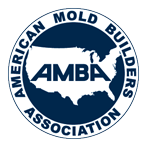By: John Kelly
March 22, 2010
Early in the history of injection molding, molders realized the problems inherent in producing high volume, fast cycling parts of commodity resins with cold runners, especially in high-cavitation molds. Cold runners can stick or hang in the mold and interrupt or extend the cycle; and often the cold runner being the last part of the shot to set up, can dictate the overall cycle.
It soon became obvious that “runnerless” molding was the way to go. Early hot runners were of the internally heated (torpedo) type or the externally heated manifold hot runner. Both were prone to leakage and hard to (especially the torpedo type) change colors with. Predating these systems were a type of runnerless mold called an Insulated Runner.
Insulated Runners had an oversized internal runner cut into both the top clamp plate and the “A” plate. This runner was very thick and relied on the thickness of this runner-cull to keep the plastic in a molten state as long as the molding machine was cycling. The walls of the runner were solid with only a molten center core providing melt delivery. These led to cylindrical drops (also very thick) and generally to top-center-gated parts.
This system needed fast, uninterrupted cycles to keep the gates open and even momentary interruption caused one or more gates to freeze off.
Startup was also tricky with these molds. Methods included hand injection of multiple shots into the mold before going to auto, making one big shot and going to auto, or boosting the back pressure way up and extrusion filling the runner cull.
Later the gate drops were heated with a probe which made startup easier and also made keeping the gates open easier, even allowing a brief disruption the the cycle. With very fast cycles (3 to 6 second range) the heated probe insulated runner can have a fairly small thickness and in some cases, be reground and re-used in the product.
Though sometimes a bit tricky to startup and keep running, these systems could offer advantages over not only cold runners, but hot runners as well. These include:
- Quick cycles
- Less regrind and scrap, though the thick cull wasn’t generally used back in molding
- The tool was less expensive to build and maintain
- Less chance for melt leakage.
- Color changes were very fast compared to hot runners, as the whole colored cull was pulled after the molding machine’s barrel was cleaned. Often color changes can be preformed in 5 minutes with less than 5 pounds of scrap
- Even if heated gate drops were employed, fewer and less sophisticated controllers were needed.
Yes, the insulated runner is an old technology, but if you have a multi-cavity, fast-cycling job using a commodity resin like PP or PE with frequent color changes, and want a more economical tool that is easier to maintain, then consider insulated runner tools.
_horizontal_white_536x129.png)

